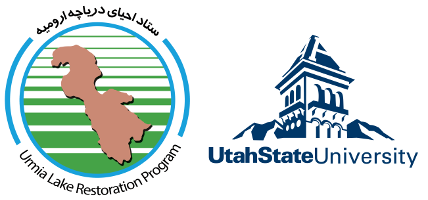Document Type
Article
Journal/Book Title/Conference
Science of The Total Environment
Volume
832
Issue
155055
Publisher
Elsevier BV
Publication Date
4-6-2022
First Page
1
Last Page
92
Creative Commons License

This work is licensed under a Creative Commons Attribution-Noncommercial-No Derivative Works 4.0 License.
Abstract
Public concern over environmental issues such as ecosystem degradation is high. However, restoring coupled human-natural systems requires integration across many science, technology, engineering, management, and governance topics that are presently fragmented. Here, we synthesized 544 peer-reviewed articles published through September 2020 on the desiccation and nascent recovery of Lake Urmia in northwest Iran. We answered nine questions of scientific and popular interest about causes, impacts, stabilization, recovery, and next steps. We find: (1) Expansion of irrigated agriculture, dam construction, and mismanagement impacted the lake more than temperature increases and precipitation decreases. (2) Aerosols from Lake Urmia's exposed lakebed are negatively impacting human health. (3) Researchers disagree on how a new causeway breach will impact salinity, evaporation, and ecosystems in the lake's north and south arms. (4) Most researchers tried to restore to a single, uniform, government specified lake level of 1274.1 m intended to recover Artemia. (5) The Iranian government motivated and funded a large and growing body of lake research. (6) Ecological and limnological studies mostly focused on salinity, Artemia, and Flamingos. (7) Few studies shared data, and only three studies reported engagement with stakeholders or managers. (8) Researchers focused on an integration pathway of climate downscaling, reservoirs, agricultural water releases, and lake level. (9) Numerous suggestions to improve farmer livelihoods and governance require implementation. We see an overarching next step for lake recovery is to couple human and natural system components. Examples include: (a) describe and monitor the system food webs, hydrologic, and human components; (b) adapt management to monitored conditions such as lake level, lake evaporation, lake salinity, and migratory bird populations; (c) improve livelihoods for poor, chronically stressed farmers beyond agriculture; (d) manage for diverse ecosystem services and lake levels; (e) engage all segments of society; (f) integrate across restoration topics while building capacity to share data, models, and code; and (g) cultivate longer-term two-way exchanges and public support. These restoration steps apply in different degrees to other Iranian ecosystems and lakes worldwide.
Recommended Citation
Parsinejad, Marsoud; Rosenberg, David E.; Govarchin Ghale, Yusuf Alizade; Khazaei, Bahram; Null, Sarah; Raja, Omid; Safaie, Ammar; Sima, Somayeh; Sorooshian, Armin; and Wurtsbaugh, Wayne A., "40-Years of Lake Urmia Restoration Research: Synthesis and Next Steps" (2022). Lake Urmia, Iran Collaborations. Paper 2. https://www.sciencedirect.com/science/article/pii/S0048969722021489



Comments
The is the accepted version of an article published in Science of the Total Environment. The published version of the article can be found here: https://doi.org/10.1016/j.scitotenv.2022.155055